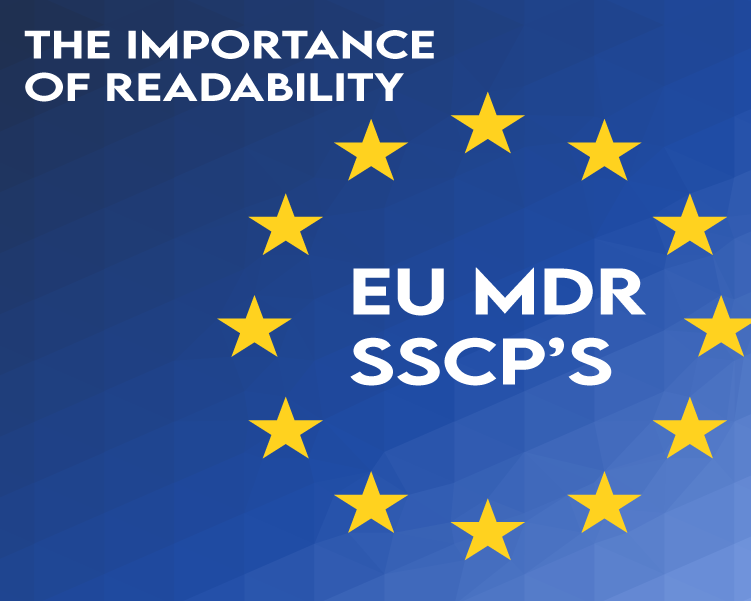Among many of the new requirements that EU MDR has introduced, the Summary of Safety and Clinical Performance (SSCP) is certainly one of the more confusing ones for many firms. SSCP’s are required for implantable and Class III devices under EU MDR and is intended to be a public document summarizing important safety and clinical performance information about the device. Although this concept seems straightforward enough, as many firms know, there is not much that is “simple” about EU MDR.
As a public document that will be accessible via EUDAMED, the SSCP for your device should be an important source of information for healthcare professionals as well as patients[1]. This document, however, is not a replacement for your IFU, implant cards, or any other documentation that is necessary for the safe and effective use of your device. The basic contents of the SSCP include the device name, Basic UDI-DI information, Authorized Representative, and much of the other administrative information that is present throughout your technical documentation. In addition to this, information on residual risks and undesirable effects should be described using quantitative data and tied closely with the results of your CER and PMCF. The quantitative data can be the result of a prospective clinical follow up study or the result of literature review, but the method of data collection must be disclosed.
If you’re thinking that this will be an easy document to author by simply copying and pasting the information from your technical documentation, just hold on because this is where the EU MDR twist comes in. As mentioned, SSCP’s are intended to be used by both healthcare professionals and patients (lay people). EU MDR has implemented a regulation on the “readability” of the SSCP for your device, specifically geared at ensuring that patients can clearly understand the information and at an appropriate depth. Based on a study compiled by the National Literacy Trust, about 9 million adults in England are functionally illiterate, while about 7.1 million people have very poor literacy skills[2]. Because a manufacturer cannot dictate or assume the literacy of the patients of their medical device, the average readability that should be achieved for the SSCP should be no higher than the 6th to 8th grade level. The challenge of summarizing all of your technical documentation at a 6th to 8th grade reading level is confounded even further by the requirement that the readability of the patient portion of the SSCP be validated by some form of test[3].
The assessment of readability can be conducted either by using a layperson assessment or computer-based assessment (such as the Flesch-Kincaid method). Both of these options come with their own unique set of pros and cons that manufacturers will have to review when selecting which is most appropriate for them. If you need support authoring your SSCP, or designing a readability validation for it, the experts at EMMA International can help! Contact us at 248-987-4497 or email us at info@emmainternational.com to learn more about how we can support your team successfully transition to EU MDR.
[1] EU MDR 2017/745, Article 32(2), Article 61(11), and Article 83(3)
[2] National Literacy Trust (2021) Adult Literacy Survey retrieved on 09/14/2022 from: https://literacytrust.org.uk/parents-and-families/adult-literacy/
[3] EU MDR 2017/745, Article 32(1), Article 2 (38)






